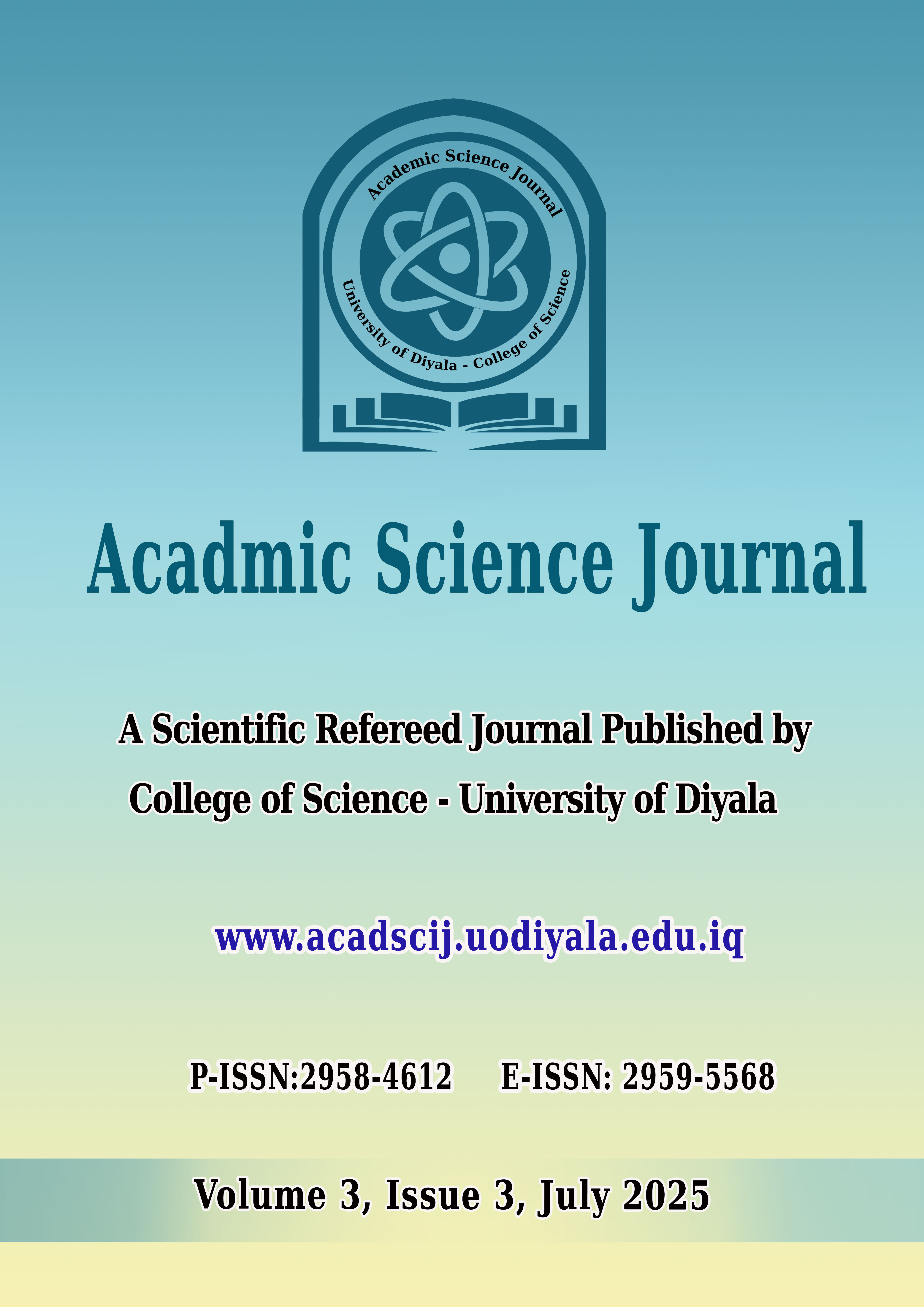Some Biochemical Markers in Type 1 Diabetes Patients
DOI:
https://doi.org/10.24237/ASJ.03.03.860BKeywords:
Type 1 diabetes mellitus, biochemical markers, lipid profile, Haemoglobin A1cAbstract
Type 1 diabetes mellitus (T1DM) is characterized by hyperglycaemia in combination with biochemical changes in glucose, lipid profile and glycated haemoglobin (HbA1c). This study aims to assess glucose, lipid profile, glycated haemoglobin (HbA1c), UREA and Creatinine in type 1 diabetic subjects. Type 1 patients were selected from the subjects attending National Center of Diabetes (AL- Mustansiria University) the number of patients are 90 the number of male are 47 the number of female are 43. Fasting blood sugar (FBS), lipid profile were determined by enzymatic methods, glycated haemoglobin (HbA1c) was measured by (HPLC), UREA and Creatinine (by kinetic method) in patients were compared with healthy controls there number are 30. type 1 diabetic patients showed statistically significant increase in the levels of HbA1c, urea, creatinine , FBS, total cholesterol (TC), low-density lipoprotein cholesterol (LDL-C) and high-density lipoprotein cholesterol (HDL-C), whereas statistically significant decreased level was found in triglycerides (TGs) and very low- density lipoprotein(VLDL). In addition, HDL/LDL ratio were significantly higher than the control subject was.
In conclusion: There are associated biological vulnerabilities to type 1 diabetes compare to the control subjects. Further research is warranted to quantify the magnitude of complications and confirm their observation in clinical populations.
Downloads
References
[1] A. Kaplan, K. A. Glucose, Clin Chem, (The CV Mosby Co. St Louis, Toronto, Princeton, 1984), 436
[2] U. Turpeinen, U. H. Stenman, Analysis of HbA1C and some Hb variants by HPLC, In Analytical and Preparative Separation Methods of Biomacromolecules (CRC Press, 2020), 1–11.
[3] W. Richmond, The development of an enzymic technique for the assay of cholesterol in biological fluids, Clin. Sci. Mol. Med. 46(1), 6P–7P(1974), DOI(https://doi.org/10.1042/cs046006pa)
[4] F. Martinello, E. L. da Silva, Ascorbic acid interference in the measurement of serum biochemical parameters: in vivo and in vitro studies, Clin. Biochem., 39(4), 396–403(2006), DOI(https://doi.org/10.1016/j.clinbiochem.2005.11.011)
[5] K. G. M. Bouafou, B. A. Konan, A. Meite, K.G. Kouame, S. Kati-Coulibally, Substitution de la farine de poisson par la farine d’asticots séchés dans le régime du rat en croissance: risques pathologiques?. Int. J. Biol. Chem. Sci. 5(3), (2011)
[6] M. Choudhary, A. Kochhar, J. Sangha, Hypoglycemic and hypolipidemic effect of Aloe vera L. in non-insulin dependent diabetics, J. Food Sci. Technol. 51, 90–96(2014), DOI(https://doi.org/10.1007/s13197-011-0459-0(
[7] E. Voutilainen, E. Hietanen, Isolation and Determination of Lipoproteins, In Regulation of Serum Lipids By Physical Exercise, (CRC Press, 2018), 11–18
[8] S. Tomo, S. Sankanagoudar, R. Shukla, P. Sharma, Validation of a novel method for determination of low-density lipoprotein cholesterol levels in Indian patients with type 2 diabetes, Diabetes Metab. Syndr. Clin. Res. Rev. 16(4), 102448(2022), DOI(https://doi.org/10.1016/j.dsx.2022.102448)
[9] S. G. Fiances, G. G. David, Basic and Clinical Endocrinology: Disorder of lipoprotein catabolism in female infertility, (McGraw-Hill, New York, 20, 2001), 7230–5
[10] A. Poznyak, A.V. Grechko, P. Poggio, V. A. Myasoedova, V. Alfieri, A. N. Orekhov, The diabetes mellitus–atherosclerosis connection: The role of lipid and glucose metabolism and chronic inflammation, Int. J. Mol. Sci., 21(5), 1835(2020), DOI(https://doi.org/10.3390/ijms21051835)
[11] M.C. Rossi, A. Nicolucci, A. Ozzello, S. Gentile, A. Aglialoro, A. Chiambretti, D. Cucinotta, Impact of severe and symptomatic hypoglycemia on quality of life and fear of hypoglycemia in type 1 and type 2 diabetes, Nutr. Metab. Cardiovasc. Dis., 29(7), 736–743(2019), DOI(https://doi.org/10.1016/j.numecd.2019.04.009)
[12] D. W. E. Fakhir Yousuf, A. Z. Syed, S. Kumar, I. Sharif, A. Ali, Urinary Clinical Manifestation in Type I and II Diabetes; An Observational Study, J. Pharm. Negat. Results, 149–156(2023), DOI(https://doi.org/10.47750/pnr.2023.14.04.20)
[13] GBD 2019 Ageing Collaborators, Global, regional, and national burden of diseases and injuries for adults 70 years and older: systematic analysis for the Global Burden of Disease 2019 Study, BMJ 376 (2022), DOI(https://doi.org/10.1136/bmj-2021-068208)
[14] L. S. Ashoor, T. M. A. Rajab, M. S. Yones, H. Q. Munshid, Visfatin in diabetes mellitus as a key role factor in osteoarthritis, Biochem. Cell. Arch., 22(1), (2022)
Downloads
Published
Issue
Section
License
Copyright (c) 2025 CC BY 4.0

This work is licensed under a Creative Commons Attribution 4.0 International License.












